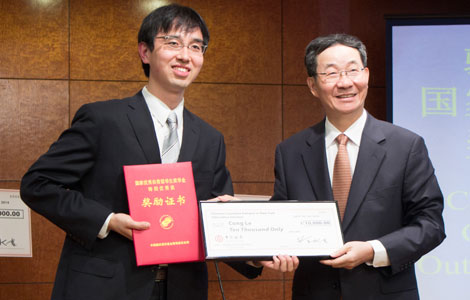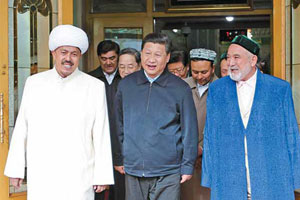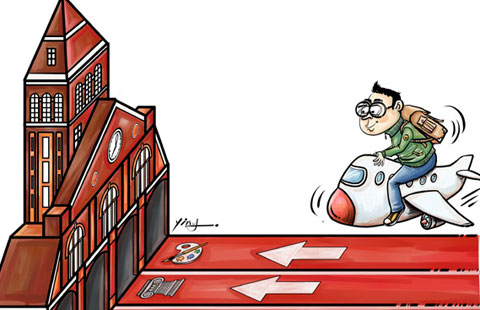Latin America 'can learn' from China, and vice versa
Updated: 2014-05-12 05:38
By ZHANG FAN in New York (China Daily)
|
||||||||
The key to solving the problems caused by excessive urbanization in Latin American countries is to develop their agricultural industry and fully utilize their labor advantages, experts said.
The Chinese Academy of Social Sciences (CASS), a prominent think tank in Beijing, just released an annual report on Latin America and the Caribbean (2013-14). The report shows that the average urbanization rate in the region reached 80 percent in 2013.
Most of the regional countries are upper-middle-income economies, according to the World Bank, but their urbanization development is much higher compared with local economic development. The excessive urbanization resulted in large populations in cities, which increased from 110 million in 1960 to 490 million in 2013.
The flow of people to the cities has caused a series of social issues, such as a 6.5 percent unemployment rate in 2013 and large areas of slums in some cities. This situation has caused severe insecurity among the citizenry, which already has limited local human development, according to a 2013-14 regional human development report from the United Nations Development Program.
"The main reason for this situation in Latin America is their industrial policies," said Wang Dehua, a researcher on public policy in the University of International Business and Economics. "The policies limit the development of the agriculture industry which led to an excessive concentration of land and poverty among rural areas. People have to go to cities to make a living."
Wang said Latin American countries should enlarge their investment in agriculture; a more developed agriculture industry not only means more job opportunities, but also a stable society.
The other reason, according to Wang, is because of the less developed labor-intensive industries in the region.
Brazil applied "import substitution" policies starting in the 1930s and achieved a 10 percent growth rate from 1968 to 1974. However, the policy also led to high inflation, which reached 2000 percent in 1993.
"Brazil is a vivid example of how the import substitution policy influenced local industrial development, especially its manufacturing industry, which should have provided lots of job opportunities," said Wang.
"It is vital for a country to put forward a proper development strategy. The reason why China gained large development in the past years is because we take full advantage of our labor resources. Labor-intensive industries stimulate our economic growth and also help stabilize our society," said Zhou Xinyu, a researcher on emerging economies from Beijing Foreign Studies University.
Zhou said Latin American countries should learn from China in developing labor-intensive industries in order to fully release the potential of their large populations.
The Chinese government has been actively advancing urbanization in recent years. A CASS report shows the urbanization rate in China reached 50 percent in 2012, a process that also gave rise to some problems, especially high housing prices.
"Though some citizens are living in relatively poor conditions, the social order in China is still more stable. But it should be noticed that what happened in Latin America can be a warning to China," said Wang.
"China should encourage more innovation too, because it will help keep economic growth dynamic," Wang said.

 Jinko ups solar footprint in Chile
Jinko ups solar footprint in Chile
 As World Cup tickets become available, it’s a seller’s market
As World Cup tickets become available, it’s a seller’s market
 More China FDI will not change Argentinean economy: expert
More China FDI will not change Argentinean economy: expert
 Yuesai Kan speaks at the Ellis Island gala
Yuesai Kan speaks at the Ellis Island gala
 Surge of visitors to Shanghai museum before relocation
Surge of visitors to Shanghai museum before relocation
 Mothers: Lifelong responsibility and unconditional love
Mothers: Lifelong responsibility and unconditional love
 Life's a whirl for top-flight acrobats
Life's a whirl for top-flight acrobats
 Outstanding overseas students acquire rewards
Outstanding overseas students acquire rewards
Most Viewed
Editor's Picks

|

|

|

|

|

|
Today's Top News
9/11 remains returned to World Trade Center site
Drilling in Chinese waters: official
US regulator will hear appeal on 'Big 4' Chinese affiliates
No recognition of eastern Ukrain referendums - US
Michelle Obama slams kidnapping of Nigerian girls
Two dead, one missing in Virginia hot air balloon fire
China: Stop harassing oil rig in Xisha Islands
Former Time Warner chief named Clippers' interim CEO
US Weekly

|

|







